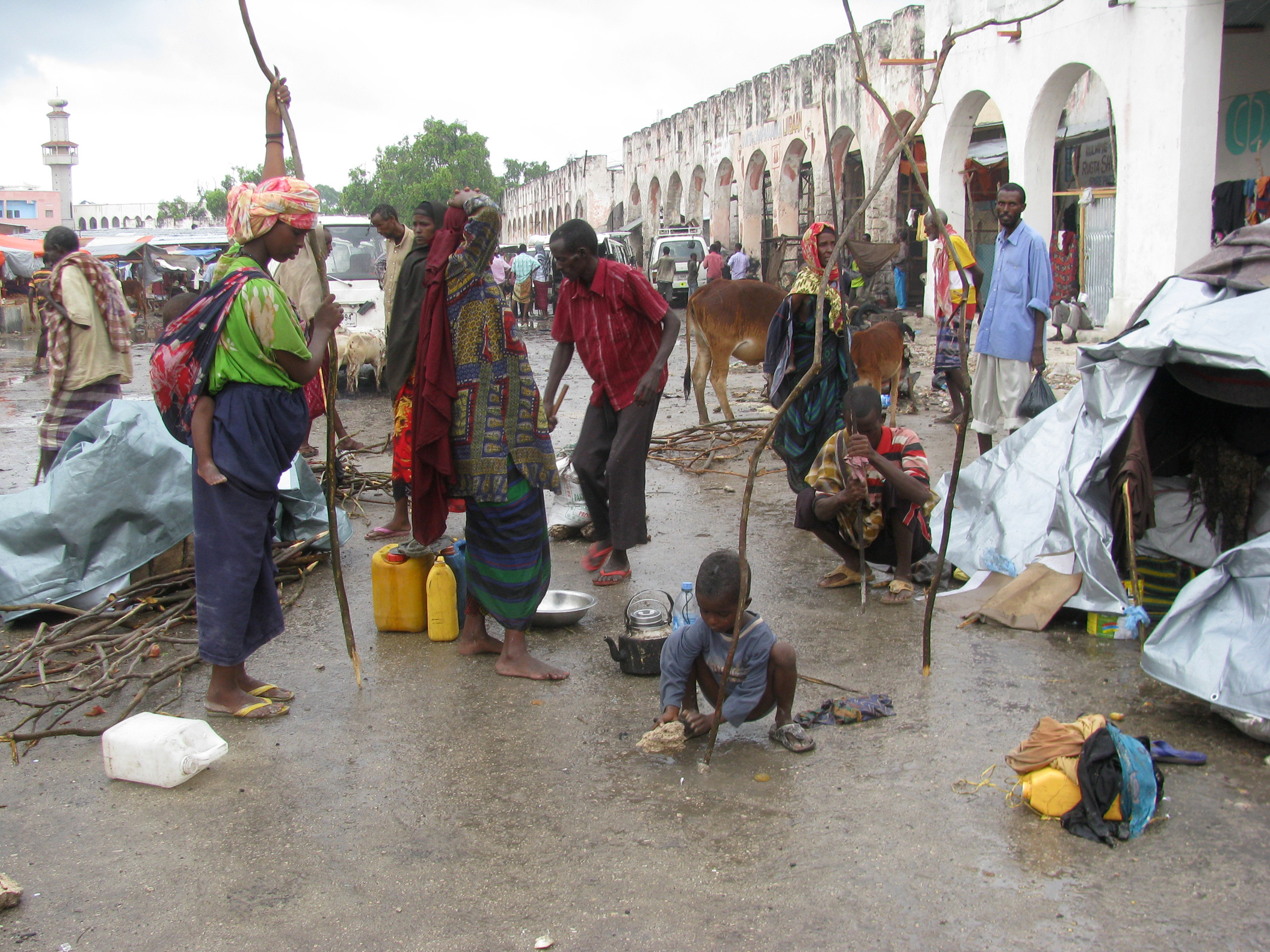"We still do not have all the resources for food, clean water, shelter and health services to save the lives of hundreds of thousands of Somalis in desperate need," Mark Bowden, the UN Humanitarian Coordinator for Somalia, said.
Immediate action was required to avoid famine spreading to all eight regions of southern Somalia. “Every day of delay is literally a matter of life or death for children and their families in the famine-affected areas," Bowden told a news conference in Nairobi on 20 July.
“This is a time for exceptional actions” in terms of the speed at which aid is delivered, and the conditions under which donors should be willing to give, he added.
With malnutrition rates topping 50 percent in some districts, the UN announced that famine had hit Lower Shabelle and southern Bakool regions. A recent assessment, Bowden said, highlighted “the shocking severity of the crisis”, confirming that the rest of Somalia was "close to famine conditions".
According to the Integrated Phase Classification's five-point scale, a famine is declared when at least 20 percent of households face extreme food shortages with limited ability to cope, the prevalence of global acute malnutrition exceeds 30 percent and crude death rates exceed two deaths per 10,000 people per day.
But naming a food crisis a famine does not legally require action in the way that announcing a genocide would, despite the politicization of the term and the gravity of the label.
"Morally speaking, famine is a term that must elicit moral indignation," said Bruno Geddo, a representative of the UN Refugee Agency (UNHCR). “Emotionally, it should push people to do more."
World Food Programme (WFP) executive director, Josette Sheeran, said: "WFP saw this emergency coming... It is now vital that the coalition of international action - involving United Nations agencies, governments, non-governmental organizations and regional organizations - quickly receive generous support and donations required to make a difference.”
Recently, Al Shabab militia, which control parts of Somalia, requested international food assistance. The inability of agencies to work in the region since early 2010 had prevented aid from reaching the very hungry, especially children, contributing to the crisis.
Mounting death toll
"Some 11,000 people have died due to drought in the past 45 days, 9,000 of them in the Bay, Bakool and Lower Shabelle regions, the rest in other regions in south-central Somalia," Abdikadir Hirsi Shekhdon, a member of the government drought committee, said in Mogadishu.
“The government and the public are helping the vulnerable people," he added. "For example, the president has distributed 1,000 tents, 1,000 blankets and 1,000 mats to some of the displaced in Mogadishu."
But with nearly half of the Somali population - 3.7 million people - in crisis, of whom an estimated 2.8 million people are in the south, the scale of the crisis is huge.
“Today the world’s attention is on my country but I ask the world to address the fundamental causes of this humanitarian catastrophe and urgently ask for the resources needed to rebuild the Somali state in the midst of an ongoing conflict," Somali Prime Minister Abdiweli Mohamed Ali said. “This is going to get worse for the Somali people, before it gets better.”
The crisis has forced thousands of Somalis to seek refuge in the capital, Mogadishu.
|
Photo: Mohamed Amin Jibril/IRIN |
| Farhiya Ahmed holds one of her two surviving children |
Warning signs
The humanitarian community has stepped up its response to the crisis, some by setting up cash-for-work or cash relief activities and distributing food. Action Contre la Faim, for example, is airlifting tons of food into Somalia, and UNHCR has added oral rehydration salts, high protein biscuits and water purification tablets to its emergency kits, items not usually included.
"So far donors have committed less than US$200 million, leaving an $800 million black hole,” Oxfam GB said in reference to humanitarian funding needs for the Horn of Africa before the famine announcement.
Help is still months away, yet warning signs were being reported a year ago by the Famine Early Warning System Network (FEWS NET) and the Food Security and Nutrition Analysis Unit.
According to Chris Hillbruner, a decision and planning support adviser for FEWS NET, this crisis showed that relatively good and accurate information could be provided well in advance but “there’s a lot of room globally for response to connect to early warning in a stronger way.”
Bowden told IRIN that although the early warning information and analysis was exceptional, it had not translated into prevention. "In Somalia, there is a mismatch between warning and response,” he said. “We must listen to our early warning systems and safeguard the impartiality of our humanitarian responses.”
Fran Equiza, Oxfam's regional director, called for quick global action to avoid a repeat of such crises.
"Emergency aid is vital right now, but we also need to ask why this has happened, and how we can stop it ever happening again," she said.
"The warning signs have been seen for months, and the world has been slow to act. Much greater long-term investment is needed in food production and basic development to help people cope with poor rains and ensure that this is the last famine in the region."
jb-maj/js/eo/mw
This article was produced by IRIN News while it was part of the United Nations Office for the Coordination of Humanitarian Affairs. Please send queries on copyright or liability to the UN. For more information: https://shop.un.org/rights-permissions





